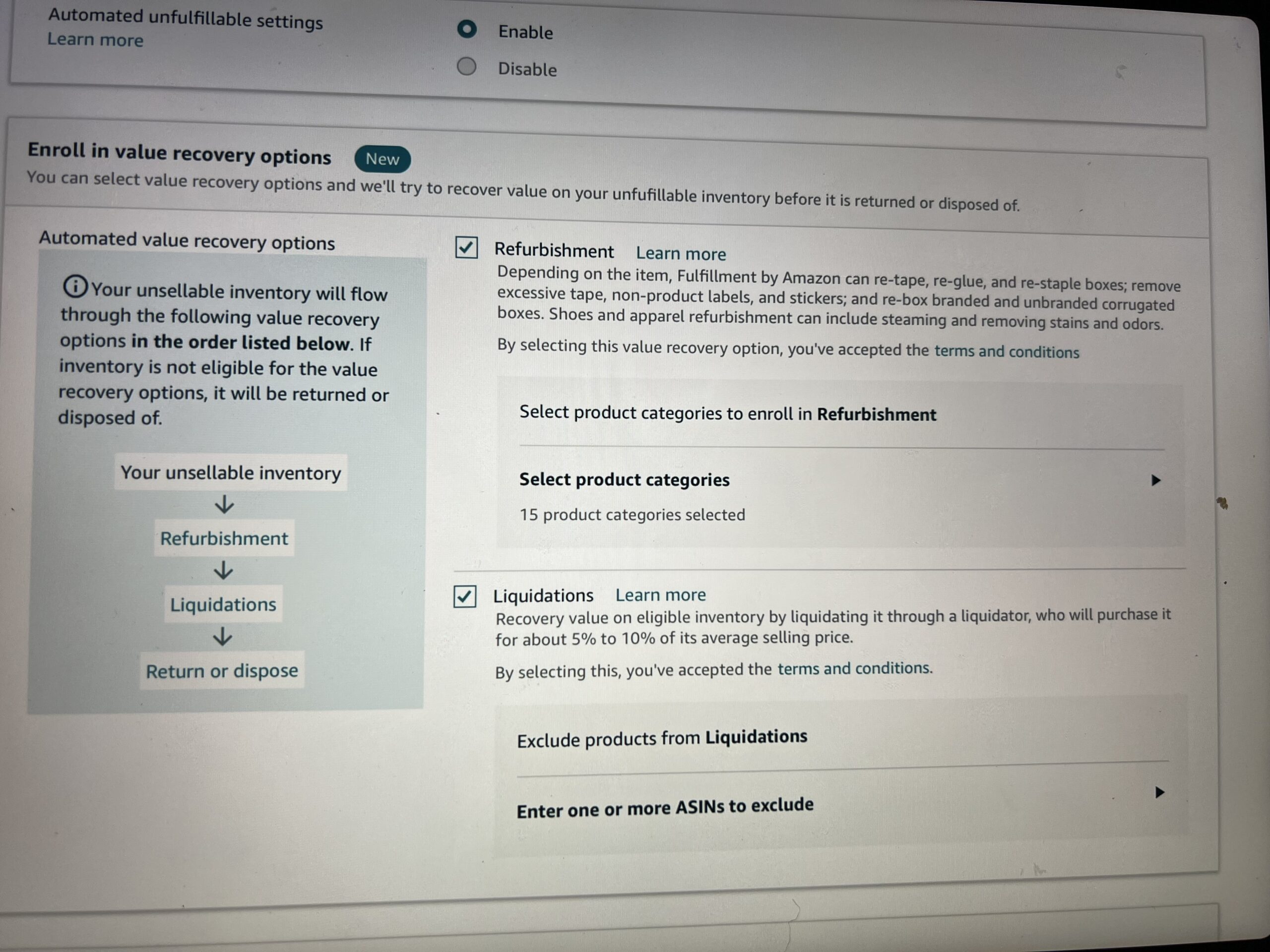All Blogs & Seller News
Comparison of Value Recovery Options on Amazon: Refurbishment vs. Liquidation

As an Amazon seller, one of the challenges you may encounter is dealing with excess inventory or unsellable customer returns. To mitigate the financial impact of these situations, Amazon offers value recovery options such as refurbishment and liquidation. In this article, I will be explaining the differences between refurbishment and liquidation and help you make informed decisions about which option suits your business needs.
Refurbishment
Refurbishment refers to the process of repairing, reconditioning, and restoring a product to a like-new condition before reselling it. These products undergo a thorough inspection to identify any defects or malfunctions. Once identified, these issues are addressed through repairs or component replacements. Additionally, the product is extensively tested to ensure it meets quality standards.
To enhance the cosmetic appearance, refurbishment may involve cleaning, polishing, and replacing damaged parts. The goal is to present the product as close to new condition as possible. They are also repackaged in suitable packaging to ensure a professional presentation.
Advantages:
- Higher Potential Profits: Refurbished products generally command higher prices compared to liquidated items due to their improved condition.
- Customer Trust: Offering a refurbished option can help build trust with buyers who seek high-quality, affordable products.
- Sustainable Practice: By refurbishing and reselling products, you contribute to reducing waste and promoting a more sustainable business model.
Liquidation
Liquidation refers to the process of selling excess inventory or customer returns in bulk, usually to third-party buyers or resellers. It involves selling a large quantity of products at a discounted price, typically in “as-is” condition. The items may have minor defects or cosmetic imperfections that make them unfit for refurbishment.
Several online platforms specialize in liquidation sales, connecting sellers with buyers interested in purchasing merchandise at a reduced price. These platforms handle logistics, facilitate auctions, or offer fixed-price listings.
Advantages:
- Quick Inventory Clearance: Liquidation allows you to rapidly offload excess inventory, freeing up valuable storage space and reducing holding costs.
- Speedy Cash Flow: Selling items in bulk provides an immediate influx of capital, which can be useful for reinvesting in new inventory or covering expenses.
- Simplified Process: Liquidation platforms streamline the selling process, often handling logistics, payments, and buyer interactions.
When faced with excess inventory or customer returns on Amazon, it’s essential to evaluate your value recovery options. Refurbishment allows you to repair and restore products to a like-new condition, catering to customers seeking quality at a slightly reduced price. On the other hand, liquidation offers a faster solution for clearing large quantities of products, providing quick cash flow but at a lower price point. Assess your business requirements, product conditions, and customer demands to determine which option aligns best with your goals. Remember, each situation may call for a different strategy, so understanding the nuances of refurbishment and liquidation empowers you to make informed decisions and optimize your selling potential on Amazon.
I hope you found this article helpful. If you are experiencing issues with your Amazon Seller Account and your Seller Account already received a warning or is under a review, I can assist you and help you resolve the matter.
In order to receive a professional advice and get help with your Amazon issue, feel free to subscribe and reach out through my dedicated assistance help page at www.onlyfans.com/kikaangelic, where I provide help with Amazon related matters in exchange for a small $24.99 fee.
If you have an Amazon-related issue, feel free to join and post into my large Amazon Seller Performance – Friendly Advice – Worldwide Facebook group, where you will be very welcome.
Many Amazon sellers recently started trading stocks and crypto currencies, hoping to diversify their income, which is a very good idea with all the uncertainty which comes with the platform. For this reason, we launched a new Facebook group, Crypto Arbitrage Income (Bitcoin, Crypto, Altcoins, Blockchain, Trading) – feel free to join us and forget about the troubles of selling on Amazon for a moment!
Additionally, here you can watch my YouTube video, where I am addressing everything you need to know about Seller Identity Verification and how to pass it:



You must be logged in to post a comment Login